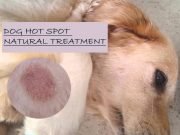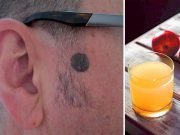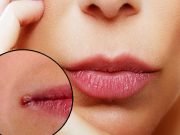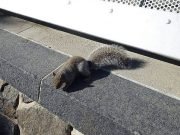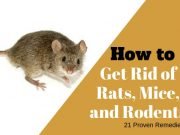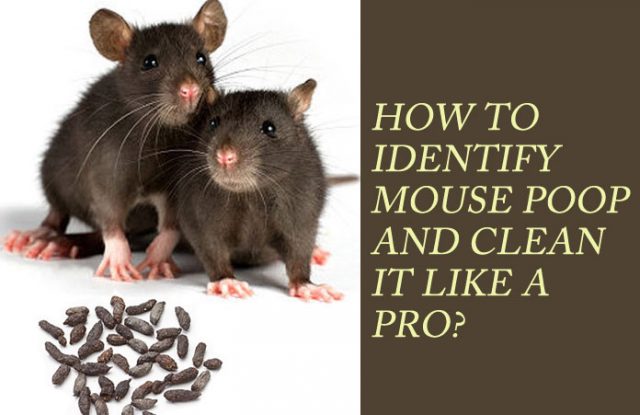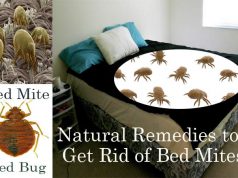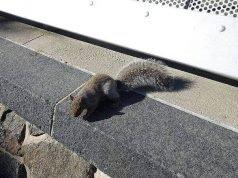Have you been hearing a squeaking sound in the walls? Do you suddenly wake up in the middle of the night due to a crunching sound in the attic? Are there fleeting glimpses of tiny feet scuttling past you on the floor whenever you flick on the lights in the basement? No, this is not the plot for the new horror movie but something scarier than that; yep, a mice infestation! So, you’re up and alert, armed with a flashlight, slowly, making your way around the dark. There is no sign of the culprit itself, of course, but your heart sinks as you see the tell-tale sign of a pest problem – a fresh pile of mouse poop.
Seeing a mouse scurrying about the house is bad enough, but to stumble upon a full-fledged rodent infestation right under your nose is downright nightmarish. As a homemaker, there is nothing more terrifying than finding your house littered with pest droppings. The only good thing about such a discovery is that now you can identify and eradicate the pests away from your home ASAP. Read on to know more about identifying mouse poop and the various home remedies that help you clean it up:
How Do You Know If There Are Rats In Your Premise?
Dealing with a rat problem in the house? Lucky for you, we are here to help. Now, rats reproduce really quickly. In just a few days these pesky creatures breed and increase exponentially in numbers. But before you get all worked up and take any rash decision, take a moment to gauge the seriousness of the infestation. Before you actually see the mice, there are several tell-tale signs that give you an indication of their presence. Listed below are a few such signs that tell you about the mouse feces in the house:
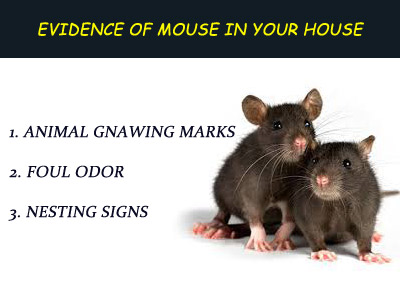
Animal Gnawing Marks
Rodents have really sharp teeth that don’t stop growing as long as they live. This is why a rodent always has to gnaw or nibble at something to blunt the razor-sharp edges of their teeth and prevent them from growing and eventually killing them. So, expect teeth marks on wooden furniture, food packaging, clothes, pillows, blankets, basically anything and everything that can be damaged will be gnawed at by these mice.
Foul Odor
Another important sign to look out for other than teeth marks and droppings would be the dingy, damp smell that mice bring into your home. Your pet cat or dog might immediately identify even the faintest traces of the smell and become excited where rodents are present. There is a strong stale smell coming from the hidden corners of the house indicate an active infestation.
Nesting Signs
Rats often use bit and scraps of paper, fabric, or dried plants to build their nesting area where they can breed and give birth to their younglings. Also, you fill find paw marks, scratches, fresh droppings on and around these nesting grounds. These creatures are often attracted to piles of trash and organic wastes- you can find their nests near dustbins, inside cabinets, on the attic and other dark but warm places.
Mouse Tracks
Rodents are always on the run, scurrying about the house in search of food and shelter. You can easily identify their tracks, though the runways get less distinctive as time passes by. One can even trace the presence of these pests by the body odor, urine and mouse poop smell.
What does mouse dropping look like?
A mouse poop dropping problem is perhaps the biggest red flag or sign that hints at the possibility of an infestation. New droppings are moist, dark and have a gooey, almost paste-like sticky texture. With time these droppings dry up and shrivel up into powder when touched. Mice droppings can be found usually in the bedrooms, up the attic, near food packages, inside cupboards, underneath sinks and other hidden places around the kitchen.
Why are Rats a Problem?
Rats, like any other pests, can be quite a problem for any house owner. For starters, rats cause immense damage to property. These small, seemingly insignificant creatures create havoc in homes, destroying everything that comes in their way. From your clothes to food to furniture, rodents can gnaw through anything. Rodents have been a menace in both commercial and personal properties. Businesses have been terminated, hotel licenses have been canceled, and hospitals have been shut down- all because people couldn’t control the ever-growing mice population around the place.
Secondly, rats are carriers of disease-causing organisms and are responsible for spreading various communicable infections. Rodent droppings spread deadly diseases such as Rat Bite fever, Hantavirus syndrome, bubonic plague and salmonellosis. The pests prefer dirty, dingy corners to breed and thus unconsciously become hosts for microparasites and germs. And while rodents may not attack you or bite you directly, they do contaminate everything they come in contact with thereby passing on the germs to your body.
What Does Rat Poop Look Like?
Rat droppings get harder to identify with the passage of time. The mouse feces dry up and get powdery over time, unlike the moist sticky consistency it has when fresh. It can be difficult to differentiate house mouse dropping from other pests, but size is an important determinant. Mouse droppings are usually eight to a quarter of an inch in length and have a striking resemblance to a grain of rice with its elongated shape and tapered ends. The color varies from blackish brown to grey depending on how old the droppings are.
Fresh droppings are usually black, turning brown in the next few weeks and eventually turning a dusty grey over time. The color of the droppings also depends on the kind of pesticide or insecticide it has consumed recently. Mice leave behind approximately 50-75 pellets a day, usually appearing along the paths they travel as they poop while moving. Rat droppings also vary from specie to specie. For instance, the Norway Rat has the largest droppings that resemble cylindrical shapes with blunt ends. The domesticated white mouse poop is relatively smaller. Even the field mouse, that’s the most common of rodent species, can be distinguished from others by their mouse dropping color and size.
Now, mouse poop doesn’t have any noticeable smell. But their urine though has a distinct ammonia odor that can be easily traced. Mice have poor eyesight but a strong sense of smell, they gather information about their surroundings from the scents left behind by other rodents.
Is Mouse Poop Dangerous? The Health Threats Associated With It
Rodents use their feces and urine to communicate, mark their territories and indicate their breeding status. So yeah, rats will poop and pee just about anywhere they go. Rats eat a lot, not just because they need all those calories but also to trim their teeth and prevent it from growing through their skulls. Ouch! Other than being disgusting and smelly, mouse poop also is harmful to our health if we’re exposed to it for long. The droppings often contain viruses and are poisonous in nature. Mouse poop carries all kinds of toxins and hence causes infections that can turn fatal if left unchecked for long.
HPS or Hantavirus Pulmonary Syndrome is a serious respiratory ailment that is transmitted through the droppings, saliva, and urine of infected rodents. Commonly known as the mouse poop disease, humans contract this disease when they breathe in the aerosolized virus present in the air. Some common symptoms of HPS include
- Breathing problems and severe wheezing
- Chest pain
- A headache
- Nausea, diarrhea
- High fever
- Rashes, red marks all over the body
Discovering Mouse Poop around the House
A mice infestation is never a pretty sight. These creatures are notorious for dirtying up the place and spreading diseases. You can find rat poop practically anywhere, in your basement, the car, near the refrigerator, even in the mousetrap that you set up for them in the corner! You’d want to clear that mess up right away, but there are a few pointers we need to remind you of before you start with the cleaning. Often these droppings contain dangerous toxins that can cause deadly infections when consumed by humans either through air or water. The old, grey pieces of poop can crumble away dust and mix with the air, while the new moist feces can enter your body through either food or water.
Don’t panic and straight up call professional pest control when you find droppings strewn all over your house floors and around the corners of the house. First, try to identify the infestation and gauge whether the rats are still in the house or not. A close look at the droppings will tell you whether the mice infestation is recent or has been eradicated long back. A thorough clean-up of the house is generally the best way to detect any signs of infestation around the property. Check the corners, the basements, the attics, inside the cupboards, drawers, under the sink, around the kitchen, the trash can, in the car, anywhere and everywhere that is large enough to fit a mouse.
Facing a Mouse Infestation? Here’s What You Can Do
If the infestation has spread to a large area then you can call up the nearest pest control company to take care of the problem for you. Otherwise, here are a few simple remedies that will help you deal with the issue yourself;
Open the doors and windows
First and foremost, let some air into the place. Once you are absolutely sure that the rodents are all driven away from your property, you can begin to clear up the mess that they left behind. As rats infest dark, damp and stuffy corners of the house, chances are that when they leave the place would be suffocating and smelly. Ventilate the space by opening the doors and windows for at least 30 minutes to let some fresh air in.
Arm yourself well
Do not sweep or dust the droppings, it only stirs up the air and spreads the infection all around. Instead, carefully pick up the droppings and then dispose of it. To do so you must be armed with the proper equipment and gear. Wear latex, rubber, or vinyl gloves, and a face mask before you begin the clean-up operation. Spray any disinfectant or a basic mixture of bleach and some water over the droppings. Pick up the feces with paper towels.
Disinfect the whole area
The next step is to thoroughly clean the entire house. Mop the floors; wipe the windows, the counter tops, with a bleach solution. You must even wash the upholstery, the wooden furniture, the attic, the basement pretty much every corner of the house that you feel was visited by the pest. Wash the bedding, the clothes or curtains that were exposed to mice.
Seal the waste
To remove the nests, first, clean it up with an insecticide or a commercial disinfectant and then put it away in a disposable paper bag. Seal the waste and throw it away someplace far away from your property. Also, clean up the air ducts, the ventilators and AC pipes inside the house.
Precautionary Measures
Now, that you have discovered rat feces on the floor along with other signs indicating an infestation, the next step is to clear it up. Never approach mouse droppings like you would approach any normal cleaning project. Pests are carriers of various diseases, and naturally, their excreta also contain toxins that are harmful to your health. Never pick the droppings with your bare hands. Wear a pair of rubber gloves and a face mask to cover your nose and mouth before you begin cleaning out the mouse poop.
The Bottom Line
If you have successfully evicted pesky rodents from your house, the next step is to clean up the mess left behind. Mice are messy creatures that wreak havoc wherever they go. We hope our remedies to dispose of rat poop will be of some help.
You may like also –





